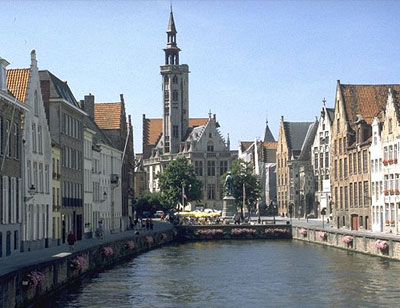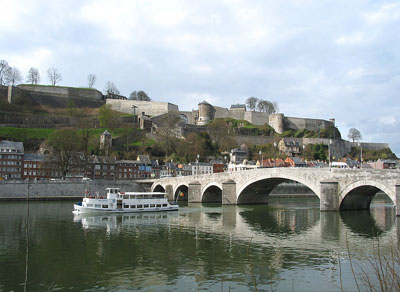Belgium
Country statistics

Land area: 11,672 sq miles (30,230 sq km)
Total area: 11,787 sq miles (30,528 sq km)
Population (2011 est.): 0,431,477 (growth rate: 0.071%); birth rate: 10.06/1000; infant mortality rate: 4.33/1000; life expectancy: 79.51
Capital City: Brussels
Monetary unit: Euro (formerly Belgian franc)
Languages: Dutch (Flemish) 60%, French 40%, German less than 1% (all official)
Ethnicity/race: Fleming 58%, Walloon 31%, mixed or other 11%
Religions: Roman Catholic 75%, Protestant or other 25%
Country introduction

Belgium is located between Germany, France, and the Netherlands. It has a short coastline on the North Sea. The south includes the forested Ardennes region, while the north is crisscrossed by canals.
It is one of the smallest nations in Europe, yet it has three official languages and an intense regional rivalry between the Flemish-speaking North and the French-speaking South.
Belgium has it's place in history. It was here that the Romans shared an important border with the Germanic tribes to the north; here that the Spanish Habsburgs finally met their match in the Protestant rebels of the Netherlands; here that Napoleon was finally defeated at the Battle of Waterloo; and most famously here, too, that the British and Belgians slugged it out with the Germans in World War I.
The culture

Belgians enjoy a comfortable life: most own their own homes, love good food and drink, benefit from an excellent social security and healthcare system, and insist on having their roads and highways brightly lit at night (the illuminated "Belgian Window" can apparently be seen from space).
The one thing that most non-Belgians would agree on when first confronted with the Belgians on their home turf is that they are a reserved and introverted people.
An excellent opportunity to observe Belgians having fun in large numbers outdoors is on the occasion of a local kermis. A kermis is a typically Belgian type of fair, complete with noisy fairground rides, bumper cars, 'oliebollen' (a variety of doughnut), escargots (snails) and 'frieten' (fries) stands.
A lesser-known attraction, and one that routinely creates confusion among non-Belgians, is the figure of Sinterklaas (Saint Nicholas). Affectionately known as de Sint, he is often described as the Belgian (and Dutch) version of Santa Claus. However, he has no connection with Christmas. Dressed in magnificent red robes and a bishop's mitre, Sinterklaas visits Belgian (and Dutch) children's homes on the eve of December 5, and climbs the roof seated on his white horse, accompanied by his faithful servant Zwarte Piet (Black Peter) to deliver presents to good children through the chimney.
Attractions & landmarks

The capital city, Brussels' consists of opulent 17th century architecture and Art Nouveau masterpieces. In the north, visitors can admire the fusion of renaissance old town with avant-garde design in Antwerp. The relaxing waterways dissecting the medieval centers of Bruges and Ghent are also worth exploring.
Traveling south to Namur, a city of Wallonia will reward visitors with the striking citadel of Namur, which is flung high above the town on a rocky outcrop. In the inspiring village of Hans-sur-Lesse there are ancient caves driping with natural sculptures worth exploring.
Visitors can take relaxing walks or cycle along the abundant footpaths, canal towpaths and former railway lines in the Ardennes. It is a region of extensive forests, rolling hills and old mountains formed on the Givetian (Devonian) Ardennes mountains. However, for an instant adrenaline rush, sailing or windsurfing off the windswept resort towns lining the Flemish coast is highly recommended. In De Panne, on the south-west coast, sand-yachting on the beach can also be tried out.